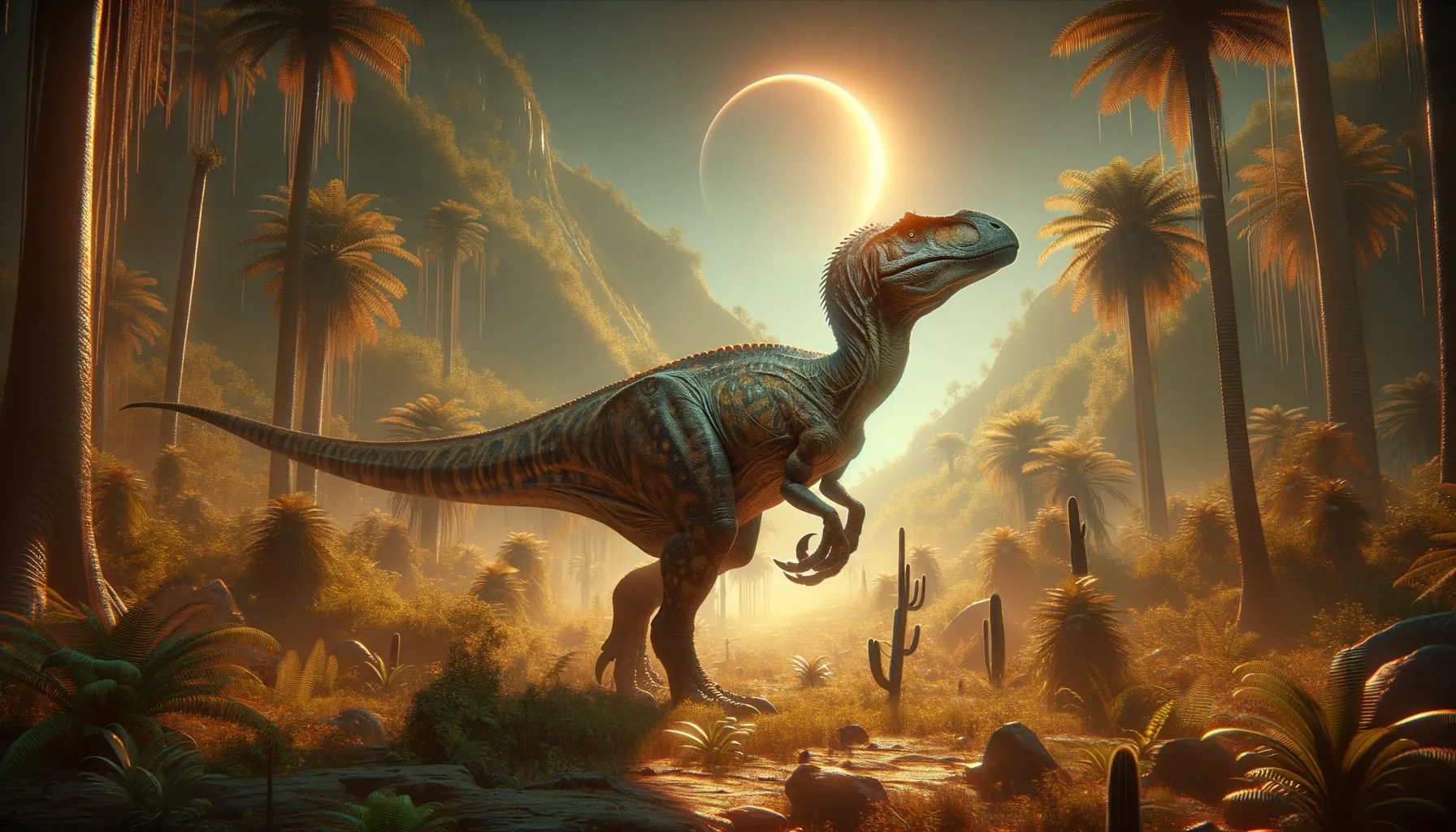
Dryptosauroides
A mysterious predator from the Cretaceous.
Period
Cretaceous
Length
Estimated length around 8 meters.
Height
Height uncertain due to limited fossil evidence.
Weight
Approximate weight unknown, likely several tons.
Dryptosauroides is a genus of theropod dinosaurs that lived during the Late Cretaceous period. Known from sparse fossils primarily discovered in India, it remains a poorly understood dinosaur. Like many theropods, it was likely a bipedal predator, but specific details about its size and behavior are largely speculative due to the limited fossil record.
Diet
Dryptosauroides was carnivorous, likely preying on smaller dinosaurs and other animals available in its environment. Its diet probably included a variety of prey, adapting to the opportunities presented in its ecosystem.
Hunting
The dinosaur was likely an active hunter, using speed and agility to catch prey. With limited fossil remains, the exact hunting strategies are unknown but can be inferred to involve stalking and sudden bursts of speed.
Environmental challenges
During the Late Cretaceous, Dryptosauroides faced challenges such as changes in sea levels and climate fluctuations. These environmental shifts could have affected its habitat and prey availability. Additionally, competition with other carnivorous dinosaurs may have influenced its behavior and adaptation strategies.
Speed
Estimated to be moderately fast for a theropod.
Lifespan
Lifespan details are not well-documented.
First discovery
First discovered in India in 1933.
Fun Facts
- Dryptosauroides is a dinosaur genus that lived during the Late Cretaceous period, around 70 million years ago.
- It is considered one of the theropod dinosaurs, which were bipedal carnivores, meaning they walked on two legs and ate meat.
- Dryptosauroides fossils have been found in India, offering insight into the diverse dinosaur fauna of the ancient supercontinent Gondwana.
- The name 'Dryptosauroides' means 'similar to Dryptosaurus,' linking it to another dinosaur known for its fierce, predatory nature.
- Though not as famous as the T. rex, Dryptosauroides contributed to the understanding of predatory dinosaurs in Gondwana.
- Dryptosauroides was relatively small compared to some of its giant relatives, making it a unique part of its ecosystem.
Growth and Development
As with many theropods, growth and development rates of Dryptosauroides remain speculative but likely included rapid growth during juvenile stages. Development may have been influenced by ecological factors such as food availability and competition. Features such as rapid growth and early maturity could have been beneficial in the dynamic Cretaceous landscape.
Habitat
The habitat of Dryptosauroides in the Late Cretaceous would have included diverse environments ranging from semi-arid regions to lush plains. Proximity to ancient river systems might have influenced its distribution. The environment likely offered a variety of niches for hunting and foraging.
Interaction with other species
Dryptosauroides likely interacted with a range of species, both as predator and competitor. It may have encountered herbivorous dinosaurs, smaller predators, and possibly even other large theropods. These interactions would have influenced its behavior, hunting strategies, and territoriality.
Natural lifespan
The natural lifespan of Dryptosauroides is uncertain.
Reproduction
Dryptosauroides likely reproduced by laying eggs, similar to other theropods. Nesting habits are unknown but may have included choosing protected locations to guard against predators. Parental care behaviors remain speculative due to the incomplete fossil record.
Social behaviour
The social behavior of Dryptosauroides remains largely unknown. It might have exhibited solitary hunting behavior common to many theropods but could also have engaged in social interactions if environmental conditions favored group living. The extent of any social behavior is speculative.
Fossil locations
Fossils of Dryptosauroides have been primarily found in India, specifically in the Lameta Formation. This limited fossil record hampers detailed understanding, but ongoing discoveries could provide more insights into its distribution and behavior in the Late Cretaceous.
